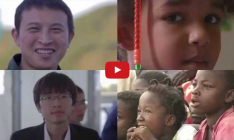

Video tutorial: How to advance gender equality in learning cities
GNLC gender tutorial

The Education 2030 agenda recognizes that gender equality requires an approach that ‘ensures that girls and boys, women and men, not only gain access to and complete education cycles, but are empowered equally in and through education.’ But gender equality in learning and education remains a challenge in many places around the world, with social norms, stereotypes and lack of understanding of gender equality concepts, which very often can hinder progress.
With more than half of the world’s population living in urban areas, advancing gender equality in cities is increasingly important as cities are facing the COVID-19 crisis and its unprecedented impacts on learning. At the peak of the pandemic, 1.5 billion learners had their education disrupted, with a disproportionate impact on girls and young women.
UIL and UNESCO’s Section on Education for Inclusion and Gender Equality produced a video tutorial explaining how gender equality must be prioritized in learning cities to empower women through learning, eliminate gender-based discrimination and foster equitable, inclusive, resilient and sustainable cities. Learning cities advance policies and practices that foster sustainable development, notably through lifelong learning programmes that promote equity, cohesion and peace.
The video tutorial provides policy-makers, urban planners, lifelong learning practitioners and interested stakeholders with information and a step-by-step action plan to integrate gender equality considerations in education policies, plans and activities at local level.
Taking viewers through seven key areas, the video tutorial explains how to: develop a joint understanding of gender equality in education and learning; identify the challenges in the learning city; engage relevant stakeholders; build capacity and encourage inclusive programming; strengthen education and learning policies; conduct research; and raise awareness.
Investing in gender equality in and through education systems and learning pathways benefits everyone, from families and communities, to cities and nations across the globe.
The video tutorial is a part of the series ‘How to build a learning city’. The series encourages the creation of thriving learning communities and provides cities with hands-on approaches to better implement policies and guiding documents.
It is available in the six UN languages (Arabic, Chinese, English, French, Russian and Spanish).
Watch the video tutorial and get started today!
About the UNESCO Global Network of Learning Cities
The UNESCO Global Network of Learning Cities (GNLC), coordinated by the UNESCO Institute for Lifelong Learning, is an international policy-oriented network geared towards knowledge production and sharing, peer learning and capacity-building. UNESCO GNLC members benefit from sharing lifelong learning policies and practices with other cities in the network, developing and exchanging knowledge on key challenges and solutions, taking part in training initiatives, and participation in regional and global events.
About UNESCO’s Section of Education for Inclusion and Gender Equality
The Section works with governments, civil society organizations, the private sector, academic institutions, and other stakeholders across 80 countries to foster system-wide transformation to benefit all learners, while targeting interventions to support girls and women, including in times of crisis. UNESCO has been at the forefront of coordinating international efforts to ensure that all learners fully exercise their right to participate in, complete and benefit from a quality education, and become empowered in and through their education paths. Learn more about UNESCO’s strategy for gender equality in and through education 2019–2025.












